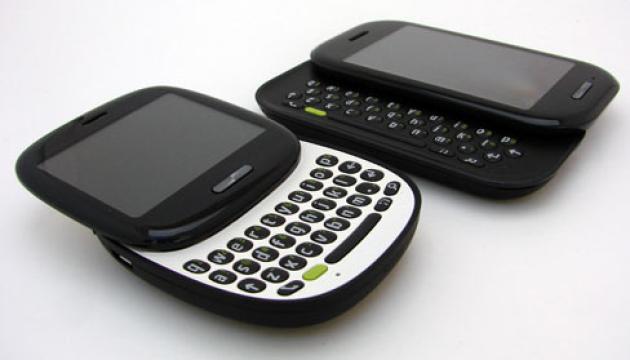Brief Summary:
Invention/Product: Microsoft Kin (models Kin ONE and Kin TWO)
Company: Microsoft (developed by a team from Danger Inc., acquired by Microsoft, creators of Hiptop/Sidekick)
Country: USA
Period: Released in May 2010, discontinued in June 2010 (lasted about 48 days).
Essence: A series of two mobile phones with QWERTY keyboards and touch screens, aimed at youth and active social network use.
One of Microsoft's fastest and most resounding failures in the mobile market. A project with significant resources invested turned out to be unclaimed due to high tariff plan prices, limited functionality (lack of third-party apps, games, calendar), unsuccessful interface, and tough competition from fully-fledged smartphones.
Creation History
The Kin project (originally known as "Project Pink") was initiated within Microsoft after acquiring Danger Inc. in 2008, known for its popular youth phone, the T-Mobile Sidekick (Hiptop). The goal was to create a new generation of phones deeply integrated with social networks and cloud services, targeting the "always online generation." Development took several years, and the project was highly anticipated as Microsoft's answer to the growing popularity of iPhones and Android smartphones in the youth segment. The Kin ONE and Kin TWO phones were launched exclusively with Verizon in the US in May 2010.
Operating Principle
Microsoft Kin operated on a modified version of the Windows CE operating system with a brand-new user interface called Kin Loop, which aggregated updates from social networks (Facebook, Twitter, MySpace) and contacts into a single feed. Key features included:
- Kin Loop: The main screen displaying real-time status updates, photos, and messages from social networks.
- Kin Spot: A feature for quickly sharing content (photos, videos, links) – users could drag an item to a "spot" at the bottom of the screen and choose with whom to share it.
- Kin Studio: A cloud service where all photos, videos, and messages from the phone were automatically uploaded, providing access via a web browser.
- Camera: The Kin TWO had an 8-megapixel camera, and the Kin ONE had a 5-megapixel camera, which was decent for that time.
- QWERTY Keyboard: Both devices featured a slide-out or built-in physical keyboard for convenient text input.
Claimed Advantages
- Deep integration with social networks: Constant access to updates and easy content sharing.
- Automatic cloud backup of all content.
- Convenient physical keyboard for communication.
- High-quality camera (especially in the Kin TWO).
- Targeted at a youthful audience that actively uses social networks.
Why Did It Fail?
- Uncompetitive tariff plan pricing: Using the Kin required an expensive Verizon tariff plan comparable to those for full smartphones (iPhone, Android), making it unattractive for the target youth audience.
- Extremely limited functionality:
- No support for third-party apps (no app store).
- No games.
- No calendar, task scheduler, IM clients (except SMS/MMS).
- Inability to directly upload photos/videos to some social networks without using Kin Studio.
- Unsuccessful user interface: Kin Loop, though fresh-looking, was not always intuitive and user-friendly.
- Competition with smartphones: By 2010, iPhones and Android smartphones already offered much more for comparable (or even lower, considering the tariff) money. The Kin appeared as a "sub-smartphone."
- Internal issues at Microsoft: The Kin project was developed alongside Windows Phone 7, creating internal competition and possibly leading to Kin not receiving adequate support and being "sacrificed" for the more strategically important Windows Phone.
Due to catastrophically low sales (estimated at only a few thousand devices), Microsoft discontinued the Kin project just 48 days after launch, marking one of the fastest and most notable failures in mobile industry history.
Ahead of Its Time?
The idea of deep social network integration and cloud backup was relevant. However, the execution was a failure. Instead of becoming a "smart feature phone," the Kin ended up as a "dumb smartphone." It tried to occupy a niche that was rapidly disappearing under the pressure of fully functional smartphones.
Can It Be Revived?
The Kin as a brand and platform is dead and has become synonymous with failure. However, the ideas of cloud synchronization and social service integration are fully realized in modern smartphones. Microsoft later attempted to use some Kin developments in Windows Phone. Today, trying to release a phone with such strict limitations and high price would lead to an even faster failure.
WTF Factor
The biggest WTF is how Microsoft, rumored to have spent around a billion dollars on development, could release a product so detached from market realities and the needs of its target audience. A phone for youth that doesn't support games, popular messengers, and requires an expensive "adult" tariff is a recipe for disaster.
Plus, the fact that the project was shut down just 48 days after launch is a record speed for such a major player. It's almost like pulling a Hollywood blockbuster from theaters two days after its premiere.
